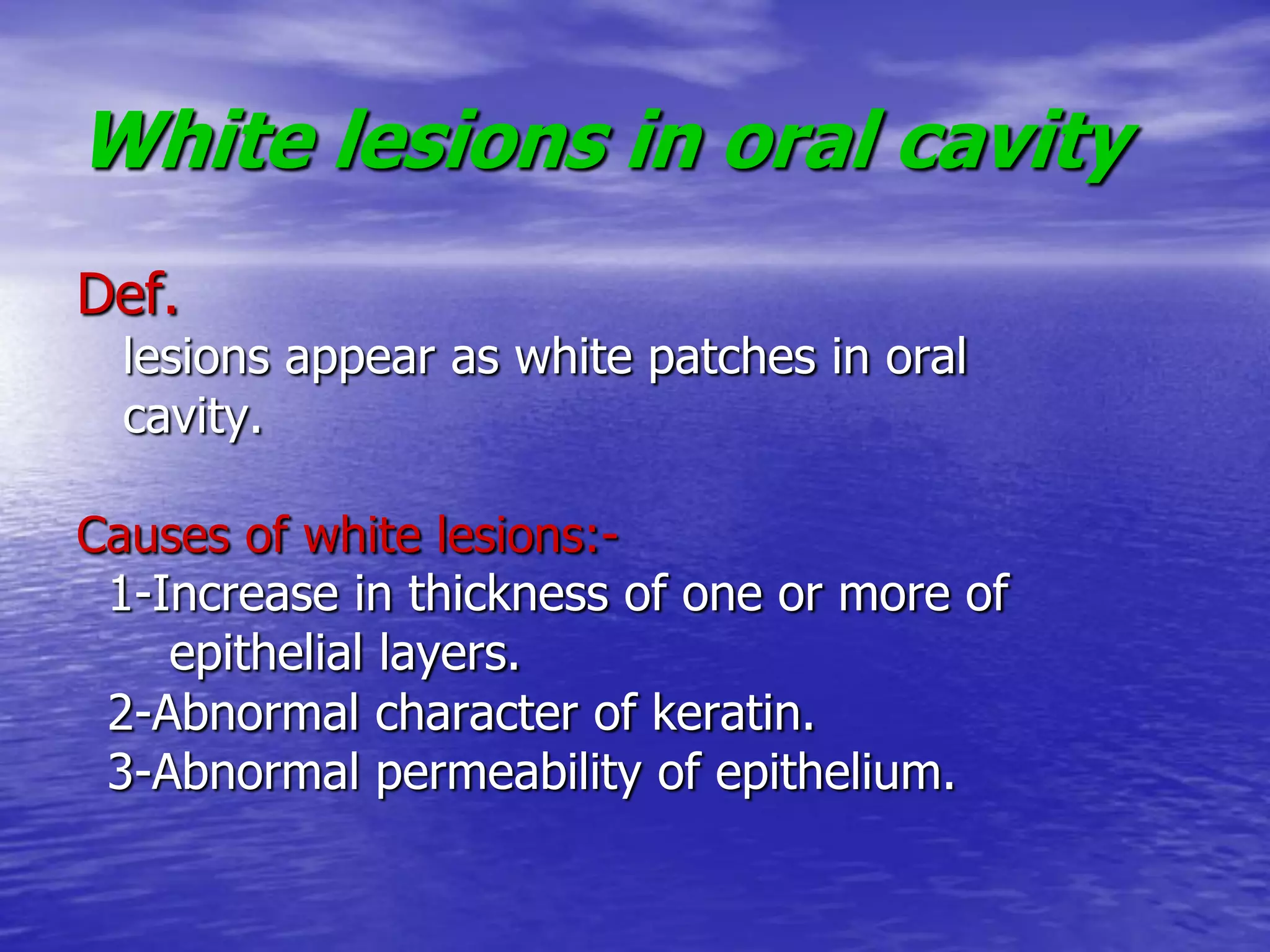The document discusses various white lesions in the oral cavity, including their definitions, causes, classifications, histopathological features, and treatments. Key conditions covered are keratotic and non-keratotic lesions such as leukoplakia, lichen planus, and candidiasis, outlining their etiologies, clinical presentations, and potential malignancy associations. The document emphasizes the importance of diagnosis, including patient history and biopsy, for effective management of these lesions.































































































